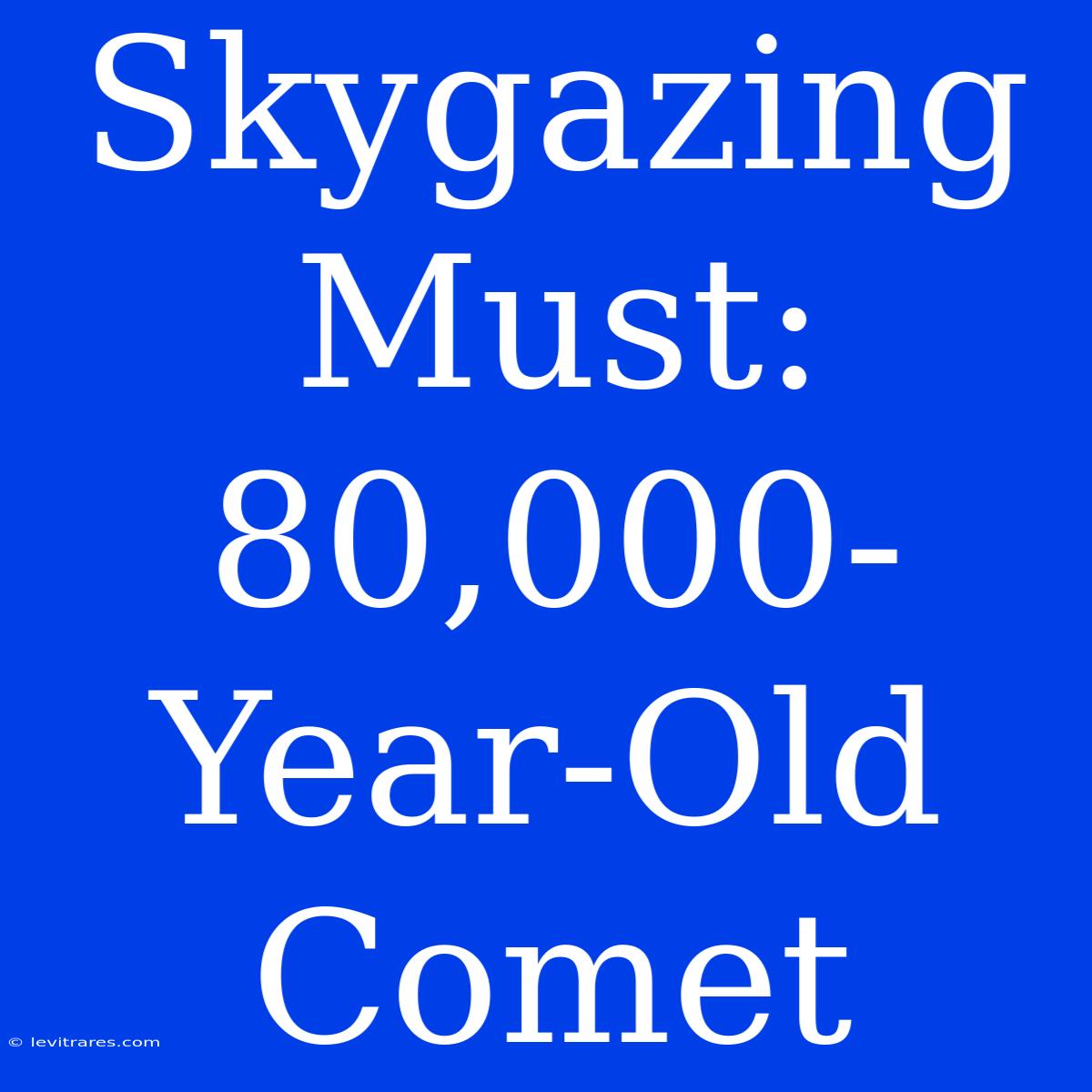Skygazing Must: 80,000-Year-Old Comet - A Glimpse Into Our Solar System's Past
Have you ever looked up at the night sky and wondered about the celestial objects streaking across the vast expanse? A comet, a celestial visitor from the outer reaches of our solar system, is set to grace our skies with its presence after an 80,000-year absence. This cosmic spectacle is an opportunity to witness a relic from a time when the Earth was still in the throes of its last ice age.
Editor Note: This 80,000-year-old comet is a reminder of the vastness of our universe and the incredible events that have shaped our solar system. Understanding these celestial objects can deepen our appreciation for the delicate balance that governs our own planet.
This event is significant for several reasons. Firstly, it's a rare opportunity to observe a comet that has been orbiting the sun for tens of thousands of years. Secondly, these comets hold valuable clues about the early solar system's formation and evolution, offering a glimpse into the past. Finally, the comet's trajectory and composition can provide data about the distribution of matter in the outer solar system, contributing to our understanding of the Kuiper Belt.
Analysis: To provide you with a comprehensive guide to this incredible celestial event, we've delved into the depths of scientific literature and astronomical data. We've analyzed the comet's trajectory, its expected brightness, and the best viewing times and locations.
Key Takeaways of the Comet's Visit:
| Feature | Description |
|---|---|
| Orbit | The comet follows an elongated elliptical orbit, taking approximately 80,000 years to complete a full revolution. |
| Brightness | Expected to be visible to the naked eye, though binoculars or a telescope will enhance the viewing experience. |
| Viewing Times | Best observed during the early morning hours, when the sky is dark and free from light pollution. |
| Location | Visible from the Northern Hemisphere, with optimal viewing in areas with clear skies and minimal light pollution. |
| Significance | Provides insights into the early solar system, the composition of icy bodies, and the evolution of our galaxy. |
The Comet's Journey
The comet, officially named C/2022 E3 (ZTF), was discovered in March 2022 by the Zwicky Transient Facility (ZTF) in California. It is currently traveling towards the sun, and is expected to reach its perihelion (closest point to the sun) on January 12, 2023. As the comet approaches the sun, its icy nucleus will begin to vaporize, creating a bright tail that will be visible from Earth.
Cometary Composition
Comets like C/2022 E3 (ZTF) are remnants from the early solar system, composed primarily of ice, dust, and frozen gases. As the comet approaches the sun, the heat vaporizes these materials, creating a visible coma (a hazy atmosphere) and a tail that extends away from the sun.
Observing the Comet
The comet will be visible for a few weeks after its perihelion, and will likely be brightest in the early morning hours. To optimize your viewing experience, it is recommended to find a location with dark skies and minimal light pollution. A pair of binoculars or a telescope can help enhance the view and reveal more details of the comet's structure.
FAQs about the Comet
Q: How long will the comet be visible?
A: The comet is expected to be visible for a few weeks, with optimal viewing conditions in January and February.
Q: What is the best time to view the comet?
A: The comet will be best observed in the early morning hours, when the sky is dark and free from light pollution.
Q: Can I see the comet with the naked eye?
A: Yes, the comet is expected to be visible to the naked eye, but binoculars or a telescope will enhance the viewing experience.
Q: Is the comet a threat to Earth?
A: No, the comet's trajectory does not pose any threat to Earth.
Tips for Viewing the Comet:
- Find a dark location with minimal light pollution.
- Use binoculars or a telescope to enhance the view.
- Check online resources for the comet's current position and visibility.
- Be patient and allow your eyes to adjust to the darkness.
Summary of the 80,000-Year-Old Comet
This celestial visitor from the outer reaches of our solar system presents a rare opportunity to witness a relic from our solar system's distant past. Observing the comet's trajectory, brightness, and composition can contribute to our understanding of the universe's formation and the intricate mechanisms governing our own planet.
Closing Message: As you gaze up at the night sky and observe this remarkable celestial event, remember that you are looking at a piece of history, a testament to the vastness and wonder of our universe. This is a reminder to appreciate the delicate balance of our own planet and the incredible journey that it has taken over billions of years.

